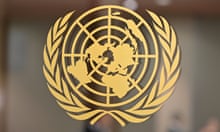Looking out over the Danube river as it passes through central Budapest, Gabor Farkass, director of Hungarian Plastics Association, bemoans his local authority’s careless attitude to recycling . “There are some sad pictures coming out in the media, because [scientists] check the riverbed, they check inside fish and birds, and they find a load of plastic,” he says.
After barely surviving decades of heavy pollution by industries in the communist era, the ecological status of the Danube river has dramatically improved. But threats from new sources of pollution are looming on the world’s most international river, which tracks almost 1,800 miles through 10 countries and four capitals.
The river is seeing a rise in plastic waste, pesticide run off and pharmaceutical waste. But perhaps the biggest difficulty is working out exactly what and where these problems are. The last Joint Danube Survey report by International Commission for the Protection of the Danube River (ICPDR) lists the top 20 hazardous substances to the entire river and found that just seven of them are officially reported on.
“We have a massive lack of information about what kind of pollutants industries are releasing into the Danube,” says Adam Kovacs, technical expert for pollution control at the ICPDR. He says that EU legislation is behind industrial development.
One of the newer pollution threats is microplastics, which can affect fish and fish larvae that confuse the particles with food sources. A study in Austria last year discovered that 40 tonnes of microplastics, pieces of plastic 5mm or smaller in diameter, are being transported each year through the country’s stretch of the river alone. It found that littering, wind carry and ineffective waste management are key contributors as larger plastic particles in the environment breakdown into smaller microplastics.
If the synopsis sounds bleak, that’s because it is; despite the apparent urgency there is not yet a standardised scientific methodology for measuring microplastics in environmental samples. Scientists admit they know little about the long-term impacts to the Danube, human health, or the wider natural environment.
A vast number of industries use plastics in items ranging from automotive parts, cleaning agents and cosmetics to packaging, agricultural and pharmaceutical items. “Our ministry is working with plastics manufacturers, trying to reduce their plastic output into the Danube down to zero.” says Franz Wagner, from Austria’s federal ministry of agriculture, forestry, environment and water management, which funded research into the phenomena after nets in a study on Danube fish larvae also landed lots of plastic particles.
Rudiger Baunemann, director general at PlasticsEurope, a continent-wide association for manufacturers, defends the industry, which he says is doing its best to help keep plastics out of the natural environment altogether. He says it’s unfair to put the sole blame on companies for the problem. Tackling it “needs to be a joint effort between industries, authorities, NGOs, and other stakeholders,” he says.
Farkass insists that recycling is a crucial element in tackling the scourge of plastics pollution to the Danube. Waste management facilities, especially highly effective ones, which are hugely expensive to develop, are key in tackling pollution issues, he says. Kovacs believes that future treatment plants will have an additional processing phase specifically for micro-pollutants.
Pollution from microplastics, however, is only a part of emerging threats to the river. Recent foreign investments in agriculture in downstream Danube countries, such as a $500m (£400m) investment in Hungary and Romania from seed giant Monsanto, are expected to increase pollution pressure over the next few years. When fertilisers reach the river, they can lead to eutrophication (a depletion of oxygen), causing algae to grow explosively, which eventually asphyxiates organisms living underneath.
Using mostly EU funds, Hungary has invested heavily in Budapest’s modern central wastewater treatment plant, which sits adjacent to the Danube shores near Ràkóczi Bridge. The capital’s waste enters the pungent-smelling plant as brown hazardous sludge, to eventually gush out into the river as treated clear water.
But stark political and economical disparities between the richer upper and poorer lower Danube countries, often means that such infrastructure becomes less effective the further downstream you go. The 2008 economic crisis hampered an EU roadmap to improve waste facilities throughout all Danube countries.
However, there are signs of hope. Romania, one of the poorest countries along the Danube is leading a pan-European project, DANUBIUS-RI, to tackle some of the problems affecting the river. “The goal is to understand the formation, distribution and impacts of emerging pollutants from microplastics, agriculture and pharmaceuticals,” says project leader Adrian Stanica.
The region has been hamstrung by its communist past, says Ciprian Nanu, another member of the project and secretariat at European Innovation Partnership on Water, and this has traditionally made it hard to engage with business. But he is trying to pull together business, NGOs and other organisations to overcome this. “We have to start now to build business relations in order to introduce innovation in regional markets.”
The project is looking to engage innovative water tech businesses, similar to WatchFrog, which is developing technologies to measure and monitor a range of micro-pollutants in waterways.











Comments (…)
Sign in or create your Guardian account to join the discussion